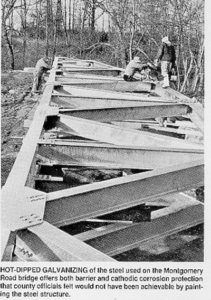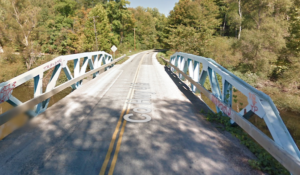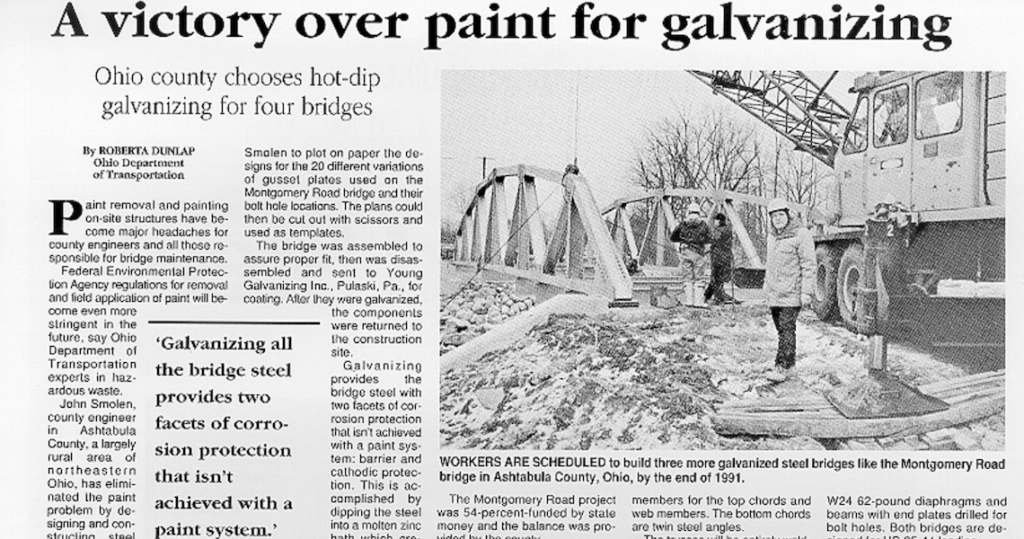Ashtabula County in Ohio is on the edge of Lake Erie. Some winter will deliver up to 70 inches of snow that is removed by more than 30 trucks that will spread more than 25 tons of rock salt. Meandering through the county is the Grand River that is crossed by several bridges. The old solution to saving the bridges was to cover it with a roof.
 In 1991, Smolen Engineering had a better idea. The solution was to preassemble the trusses and have them hot-dip galvanize. Galvanization is a plating process where an outer layer of zinc is applied to metal. The zinc layer does corrode, but at a much lower rate than steel and acts as a sacrificial layer. The galvanized trusses of the bridge were then transported to the work site for final assembly.
In 1991, Smolen Engineering had a better idea. The solution was to preassemble the trusses and have them hot-dip galvanize. Galvanization is a plating process where an outer layer of zinc is applied to metal. The zinc layer does corrode, but at a much lower rate than steel and acts as a sacrificial layer. The galvanized trusses of the bridge were then transported to the work site for final assembly.
In a 1991 article, the trade publication American Metal Market reported on the construction of several galvanized bridges in Ashtabula County. Smolen Engineering won the contract for the bridges because they solved a critical problem for the county when it came to maintaining bridges and complying with EPA mandates.
Iron and wood bridges require painting. In the 1980s, the EPA did not want municipalities scrapping old paint from bridges and having it fall into the water below. Galvanizing the bridges solved the problem.
Almost 30 years later, the bridges built by Smolen Engineering are still standing, and the hot-dipped galvanized coating is still intact. You can see the current condition on Google Street View here.
 Hot-dipped galvanization has more applications than just bridge trusses. Brake pad backing plates can be galvanized and solve a similar problem that Smolen faced in 1991.
Hot-dipped galvanization has more applications than just bridge trusses. Brake pad backing plates can be galvanized and solve a similar problem that Smolen faced in 1991.
Galvanization is performed before the friction material is attached to the backing plate. By galvanizing the surface between the backing plate and friction material, the possibility of corrosion that can cause edge lift and delamination is reduced.
Galvanization also eliminates the need to paint the brake pad. Without paint, it removes the possibility of the paint flaking off and contaminating the environment. The paint used on some brake pads contains lead, copper and other heavy metals.
